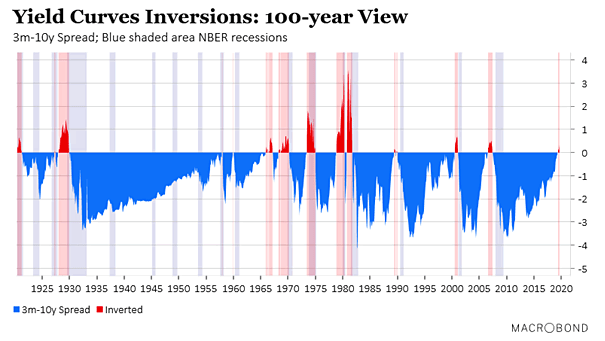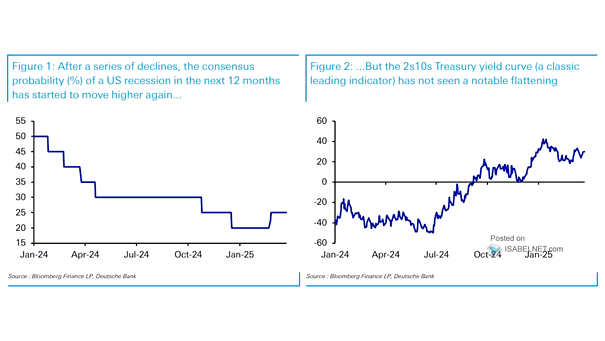Yield Curves Inversions: 100-Year View
Yield Curves Inversions: 100-Year View This chart shows that over the past 100 years, some recessions have occurred without yield curve inversion. The yield curve is one recession indicator among many others. Image: Macrobond


